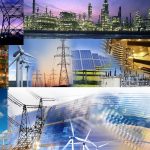Industry-standard safety practices are always a good idea, if for no other reason than to condition personnel against becoming lax and wandering unprotected from one electrical environment to another.
But for example, with the Megger’s models of ground testers specifically, there are few requirements. The instruments themselves present no potential hazard. While testers of years ago sometimes used high currents and voltages, and some lines still do, all Megger models have taken advantage of microprocessor sensitivities in order to limit both voltage and current within levels safe for human operation.
No more than 50 V and 10 mA are produced, except when using for example the Megger’s model DET2/2 in its high-current mode, in which case a maximum of 50 mA are produced at low voltage.
The only possible hazard in a ground test then is from the electrical system if the test is being performed on a ground electrode while it remains on line. Incidentally, because of the low voltage and current, plus uncommon frequency, the ground tester does not introduce any intrusive signal onto the electrical system that might trip protective devices or interfere with operation.
The reverse can occur, however. The electrical system can intrude on the tester. That is to say, if a fault condition occurs while the ground test is being performed, the ground electrode will be brought on line by the fault current going to earth and voltages can develop across the tester.
These can damage the instrument and threaten the operator.
For personnel safety, however, all that needs to be done is to follow standard safety practices, such as wearing insulated electrical gloves and working on a protective mat.
 Ground testing of power substation
Ground testing of power substation
It has just rained heavily; will this influence my test?
Yes. There’s little you can do about the weather, except be aware of its effects and work accordingly. Soil conductivity is based on electrical conductance by dissolved ions in moisture, not unlike the action of a car battery. When it rains, the increased moisture dissolves salts in the soil and promotes added conductivity. Resistance goes down.
If the only goal was to “make spec”, you could try watering the area before the arrival of the inspector. But that only defeats the purpose of installing a ground.
Remember, the electrode is only as good as its worst day, because a fault situation can occur at any time. If it has rained all night, and the electrode barely meets spec, chances are that it will not when tested during dry weather. The ground design should be improved. Take all of this into consideration, and plan accordingly.
I have a ground installed in sandy (or rocky) soil; what can I do to test this?
The test is the same, but chances are the results won’t be pleasant. It is much more difficult to ground in sandy or rocky soil. Sand does not hold water well and so the moisture that is needed to promote electrical conductivity readily drains away.
Rocky soils have poor overall consistency, lots of space between individual elements, and reduced surface contact with the buried electrode. All of these conditions mean that the original design and installation must be more rigorous and thorough than in more agreeable types of soil.
If this wasn’t done in the first place, chances are that the results of a later ground test will prove unpleasant.
The test itself isn’t categorically different, but it may be advisable to take some special steps to make it more successful. In rocky terrain, it may be necessary to use longer, more robust test probes in order to attain sufficient contact with the soil. The tester’s indicators will apprise the operator of this.
And since ground systems in poor soils generally have to be larger and more elaborate, their electrical field zones are much larger and more diffuse than those of simpler grounds. Therefore, it may require excessive lead lengths to get outside the ground’s sphere of influence for a good test. Be prepared to switch to an alternate method that does not require as much distance (e.g., Slope Method).
In general, it is a good practical idea to become familiar with several recognized test procedures, some standard and some specialized, so as to be always ready to adapt to an atypical situation if your usual method fails to provide a coherent result.


